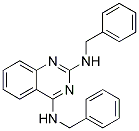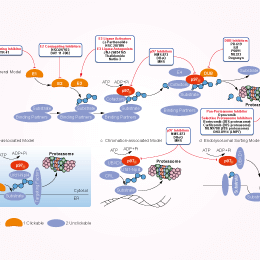
- Bioactive Compounds
- By Signaling Pathways
- PI3K/Akt/mTOR
- Epigenetics
- Methylation
- Immunology & Inflammation
- Protein Tyrosine Kinase
- Angiogenesis
- Apoptosis
- Autophagy
- ER stress & UPR
- JAK/STAT
- MAPK
- Cytoskeletal Signaling
- Cell Cycle
- TGF-beta/Smad
- DNA Damage/DNA Repair
- Compound Libraries
- Popular Compound Libraries
- Customize Library
- Clinical and FDA-approved Related
- Bioactive Compound Libraries
- Inhibitor Related
- Natural Product Related
- Metabolism Related
- Cell Death Related
- By Signaling Pathway
- By Disease
- Anti-infection and Antiviral Related
- Neuronal and Immunology Related
- Fragment and Covalent Related
- FDA-approved Drug Library
- FDA-approved & Passed Phase I Drug Library
- Preclinical/Clinical Compound Library
- Bioactive Compound Library-I
- Bioactive Compound Library-Ⅱ
- Kinase Inhibitor Library
- Express-Pick Library
- Natural Product Library
- Human Endogenous Metabolite Compound Library
- Alkaloid Compound LibraryNew
- Angiogenesis Related compound Library
- Anti-Aging Compound Library
- Anti-alzheimer Disease Compound Library
- Antibiotics compound Library
- Anti-cancer Compound Library
- Anti-cancer Compound Library-Ⅱ
- Anti-cancer Metabolism Compound Library
- Anti-Cardiovascular Disease Compound Library
- Anti-diabetic Compound Library
- Anti-infection Compound Library
- Antioxidant Compound Library
- Anti-parasitic Compound Library
- Antiviral Compound Library
- Apoptosis Compound Library
- Autophagy Compound Library
- Calcium Channel Blocker LibraryNew
- Cambridge Cancer Compound Library
- Carbohydrate Metabolism Compound LibraryNew
- Cell Cycle compound library
- CNS-Penetrant Compound Library
- Covalent Inhibitor Library
- Cytokine Inhibitor LibraryNew
- Cytoskeletal Signaling Pathway Compound Library
- DNA Damage/DNA Repair compound Library
- Drug-like Compound Library
- Endoplasmic Reticulum Stress Compound Library
- Epigenetics Compound Library
- Exosome Secretion Related Compound LibraryNew
- FDA-approved Anticancer Drug LibraryNew
- Ferroptosis Compound Library
- Flavonoid Compound Library
- Fragment Library
- Glutamine Metabolism Compound Library
- Glycolysis Compound Library
- GPCR Compound Library
- Gut Microbial Metabolite Library
- HIF-1 Signaling Pathway Compound Library
- Highly Selective Inhibitor Library
- Histone modification compound library
- HTS Library for Drug Discovery
- Human Hormone Related Compound LibraryNew
- Human Transcription Factor Compound LibraryNew
- Immunology/Inflammation Compound Library
- Inhibitor Library
- Ion Channel Ligand Library
- JAK/STAT compound library
- Lipid Metabolism Compound LibraryNew
- Macrocyclic Compound Library
- MAPK Inhibitor Library
- Medicine Food Homology Compound Library
- Metabolism Compound Library
- Methylation Compound Library
- Mouse Metabolite Compound LibraryNew
- Natural Organic Compound Library
- Neuronal Signaling Compound Library
- NF-κB Signaling Compound Library
- Nucleoside Analogue Library
- Obesity Compound Library
- Oxidative Stress Compound LibraryNew
- Plant Extract Library
- Phenotypic Screening Library
- PI3K/Akt Inhibitor Library
- Protease Inhibitor Library
- Protein-protein Interaction Inhibitor Library
- Pyroptosis Compound Library
- Small Molecule Immuno-Oncology Compound Library
- Mitochondria-Targeted Compound LibraryNew
- Stem Cell Differentiation Compound LibraryNew
- Stem Cell Signaling Compound Library
- Natural Phenol Compound LibraryNew
- Natural Terpenoid Compound LibraryNew
- TGF-beta/Smad compound library
- Traditional Chinese Medicine Library
- Tyrosine Kinase Inhibitor Library
- Ubiquitination Compound Library
-
Cherry Picking
You can personalize your library with chemicals from within Selleck's inventory. Build the right library for your research endeavors by choosing from compounds in all of our available libraries.
Please contact us at info@selleckchem.com to customize your library.
You could select:
- Antibodies
- Bioreagents
- qPCR
- 2x SYBR Green qPCR Master Mix
- 2x SYBR Green qPCR Master Mix(Low ROX)
- 2x SYBR Green qPCR Master Mix(High ROX)
- Protein Assay
- Protein A/G Magnetic Beads for IP
- Anti-Flag magnetic beads
- Anti-Flag Affinity Gel
- Anti-Myc magnetic beads
- Anti-HA magnetic beads
- Poly DYKDDDDK Tag Peptide lyophilized powder
- Protease Inhibitor Cocktail
- Protease Inhibitor Cocktail (EDTA-Free, 100X in DMSO)
- Phosphatase Inhibitor Cocktail (2 Tubes, 100X)
- Cell Biology
- Cell Counting Kit-8 (CCK-8)
- Animal Experiment
- Mouse Direct PCR Kit (For Genotyping)
- New Products
- Contact Us
research use only
DBeQ p97 inhibitor
DBeQ (JRF 12) is a selective, potent, reversible, and ATP-competitive p97 inhibitor with IC50 of 1.5 μM.

Chemical Structure
Molecular Weight: 340.42
Purity & Quality Control
Batch:
S719901
DMSO]68 mg/mL]false]Ethanol]5 mg/mL]false]Water]Insoluble]false
Purity:
99.79%
99.79
Related Products
| Related Products | NMS-873 CB-5339 | Click to Expand |
|---|---|---|
| Related Compound Libraries | Kinase Inhibitor Library FDA-approved Drug Library Natural Product Library Bioactive Compound Library-I Highly Selective Inhibitor Library | Click to Expand |
Signaling Pathway
Mechanism of Action
| Features | Rapidly and potently induces activation of executioner caspases and cell death. | ||
|---|---|---|---|
| Targets |
|
In vitro |
||||
| In vitro | DBeQ blocks UbG76V-GFP, ODD-Luc and Luc-ODC degradation with IC50 of 2.6 μM, 56 μM and 45 μM in HeLa cells. This compound is at least 50-fold less potent toward N-ethylmaleimide–sensitive factor (NSF) and 26S proteasome. It inhibits p97 competitively with respect to ATP, with Ki of 3.2 μM, suggesting that it binds to the active site of the D2 domain. This compound (10 μM) potently blocks degradation of TCRα-GFP in HEK293 cells. It induces CHOP within 3 hours in a concentration-dependent manner but does not increase p21 level in HEK293 cells. This compound (15 μM) induces a strong accumulation of LC3-II in the nucleus plus membrane-enriched and cytosolic fractions in Hela cells. It acts by blocking autophagic degradation of LC3-II instead of inducing autophagy in HeLa cells. This compound (10 μM) rapidly promotes activation of the “executioner” caspases-3 and -7 in HeLa cells. It activates the intrinsic caspase-9 apoptotic pathway more than the extrinsic caspase-8 pathway, whereas STS activates both pathways to a similar extent. This compound is fivefold more active against multiple myeloma (RPMI8226) cells than normal human fetal lung fibroblasts (MRC5), with HeLa and Hek293 cells showing intermediate sensitivities. [1] It exhibits 20-fold selectivity for stabilizing p97-dependent vs. independent UPS reporter substrates in HeLa cells. This chemical impairs degradation of substrates within the ERAD and autophagy pathways. [2] It (12 μM) inhibits intracellular neutralization in a dose-dependent manner in HeLa cells. This compound (10 μM), which completely inhibits degradation of virus and antibody in the fate-of-capsid experiment, fails to prevent degradation of IgG Fc. It (9 μM) reduces the initial gradient of neutralization as a function of antibody concentration. [3] This compound decreases both basal and nutrient-stimulated phosphorylation of MTOR targets similar to the effects of rapamycin in U20S cells. [4] | |||
|---|---|---|---|---|
| Kinase Assay | Manual ATPase Assay | |||
| Assay Buffer [20 μL of 2.5× concentration, where 1× = 50 mM Tris (pH 7.4), 20 mM MgCl2, 1 mM EDTA, and 0.5 mM tris(2-carboxyethyl)phosphine (TCEP)] is dispensed into each well of a 96-well plate. Purified p97 (25 μL of 50 μM) is diluted in 975 μL of 1× Assay Buffer, and 10 μL is dispensed in each well. This compound (10 μL) or 5% DMSO (10 μL) is then added to each well, and the plate is incubated at room temperature for 10 min. The ATPase assay is carried out by adding to each well 10 μL of 500 μM ATP (pH 7.5), incubating at room temperature for 60 min, and then adding 50 μL Kinase Glo Plus reagent, followed by a final 10-min incubation at room temperature in the dark. Luminescence is read on an Analyst AD. This chemical is assayed at a range of concentrations (0, 0.048, 0.24, 1.2, 6, and 30 μM) in triplicate. | ||||
| Cell Research | Cell lines | MRC-5, Hek293, HeLa and RPMI8226 cells | ||
| Concentrations | 33 μM | |||
| Incubation Time | 48 hours | |||
| Method | Cells are seeded on a 384-well solid white plate (5,000 cells/well). Cells are transfected with luciferase siRNA or p97 siRNA (10 nM) for 48 hours or treated with DBeQ for the indicated amount of time. Caspase-3/7 Glo, caspase-6 Glo, caspase-8 Glo, or caspase-9 Glo is added into each well and mixed by shaking at 500 rpm for 1 min. Luminescence signal is determined after incubation at room temperature for 1 hour. Cellular viability is determined with CellTiter-Glo reagen. To determine the IC50 of cellular viability, cells are treated with MG132 or this compound at seven concentrations (threefold serial dilutions starting at 33 μM) for 48 hours. IC50 values are calculated from fitting the percentage of luminescence signal normalized to DMSO treated cells). | |||
References |
|
Chemical Information
| Molecular Weight | 340.42 | Formula | C22H20N4 |
| CAS No. | 177355-84-9 | SDF | Download SDF |
| Synonyms | JRF 12 | ||
| Smiles | C1=CC=C(C=C1)CNC2=NC(=NC3=CC=CC=C32)NCC4=CC=CC=C4 | ||
Storage and Stability
| Storage (From the date of receipt) | |||
|
In vitro |
DMSO : 68 mg/mL ( (199.75 mM) Moisture-absorbing DMSO reduces solubility. Please use fresh DMSO.) Ethanol : 5 mg/mL Water : Insoluble |
Molecular Weight Calculator |
|
In vivo Add solvents to the product individually and in order. |
In vivo Formulation Calculator |
|||||
Preparing Stock Solutions
Molarity Calculator
In vivo Formulation Calculator (Clear solution)
Step 1: Enter information below (Recommended: An additional animal making an allowance for loss during the experiment)
mg/kg
g
μL
Step 2: Enter the in vivo formulation (This is only the calculator, not formulation. Please contact us first if there is no in vivo formulation at the solubility Section.)
% DMSO
%
% Tween 80
% ddH2O
%DMSO
%
Calculation results:
Working concentration: mg/ml;
Method for preparing DMSO master liquid: mg drug pre-dissolved in μL DMSO ( Master liquid concentration mg/mL, Please contact us first if the concentration exceeds the DMSO solubility of the batch of drug. )
Method for preparing in vivo formulation: Take μL DMSO master liquid, next addμL PEG300, mix and clarify, next addμL Tween 80, mix and clarify, next add μL ddH2O, mix and clarify.
Method for preparing in vivo formulation: Take μL DMSO master liquid, next add μL Corn oil, mix and clarify.
Note: 1. Please make sure the liquid is clear before adding the next solvent.
2. Be sure to add the solvent(s) in order. You must ensure that the solution obtained, in the previous addition, is a clear solution before proceeding to add the next solvent. Physical methods such
as vortex, ultrasound or hot water bath can be used to aid dissolving.
Tech Support
Answers to questions you may have can be found in the inhibitor handling instructions. Topics include how to prepare stock solutions, how to store inhibitors, and issues that need special attention for cell-based assays and animal experiments.
Tel: +1-832-582-8158 Ext:3
If you have any other enquiries, please leave a message.
* Indicates a Required Field






































